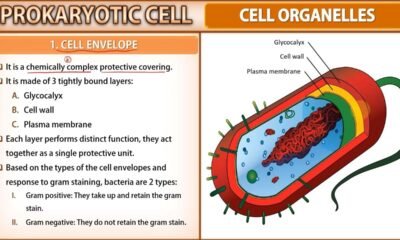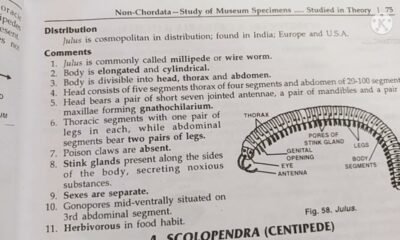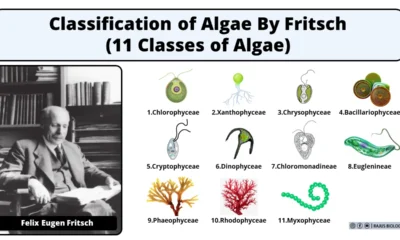Blog
Cyanobacteria Diagrams, Structure and Examples | Free Biology Notes

In this article we will discuss about cyanobacteria diagram, Structure and Examples
Structure of Cyanobacteria
- Sheeth: It is a protective outer layer that surrounds the cyanobacteria cell
- Cell wall: A rigid outer structure that provides support and protection
- Gas vacuole: It allows the cyanobacteria to float in water by regulating its buoyancy
- Phycobilisome: A light-harvesting complex and absorbs light and transfers the energy to the reaction center in the photosynthetic process
- Thylakoid: Where the photosynthetic process takes place
- DNA: The genetic material of the cell that contains the instructions for the cell’s development and functioning
- Carboxysome: A protein shell inside the cyanobacteria cell that contains the enzyme responsible for carbon fixation during photosynthesis
- Ribosome: A cellular structure responsible for protein synthesis
- Cyanophycin: A nitrogen storage and transport polymer
Examples of cyanobacteria
- Anabaena: It is a filamentous cyanobacterium known for its ability to fix nitrogen and form specialized cells called heterocysts.
- Spirulina: It is a spiral-shaped cyanobacterium that’s often consumed as a dietary supplement due to its high protein content and potential health benefits.
- Nostoc: It is a genus of cyanobacteria that forms colonies of gelatinous spheres. It’s found in a variety of habitats, including soil, freshwater, and even symbiotically with certain plants.
- Microcystis: It is found in freshwater ecosystems. Some species can produce toxins under certain conditions, causing harmful algal blooms.
- Gloeocapsa: It is a unicellular cyanobacterium commonly found in terrestrial environments. It’s known for forming colonies on rocks, soil, and building surfaces, contributing to the formation of biological crusts.

 Blog7 months ago
Blog7 months ago[PPT] Human Reproduction Class 12 Notes
- Blog7 months ago
PG TRB Botany Study Material PDF Free Download
- Blog7 months ago
Contribution of Indian Phycologists (4 Famous Algologist)

 Blog7 months ago
Blog7 months agoCell The Unit of Life Complete Notes | Class 11 & NEET Free Notes

 Blog7 months ago
Blog7 months ago[PPT] The living world Class 11 Notes

 Blog7 months ago
Blog7 months agoJulus General Characteristics | Free Biology Notes

 Blog7 months ago
Blog7 months agoClassification of Algae By Fritsch (11 Classes of Algae)
- Blog7 months ago
Class 12 Biology Notes Chapter wise PPT












